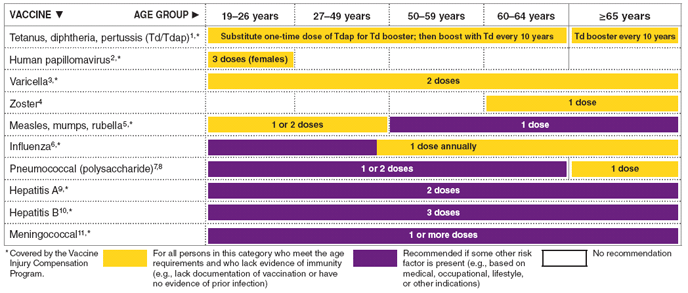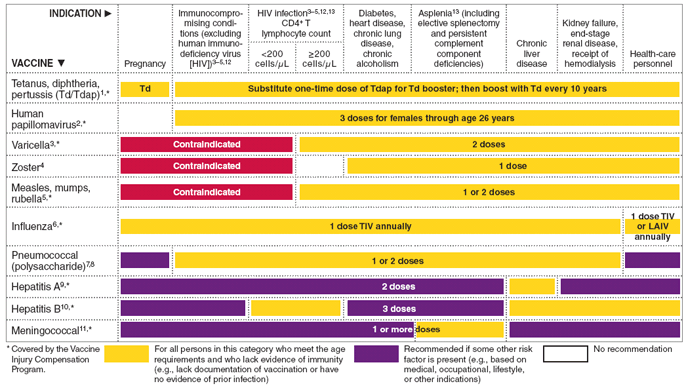The Recommended Adult Immunization Schedule has been approved by the Advisory Committee on Immunization Practices, the American Academy of Family Physicians, the American College of Obstetricians and Gynecologists, and the American College of Physicians.
Suggested citation: Centers for Disease Control and Prevention. Recommended adult immunization schedule---United States, 2010. MMWR 2010;59(1).
 ShareCompartir
ShareCompartir




